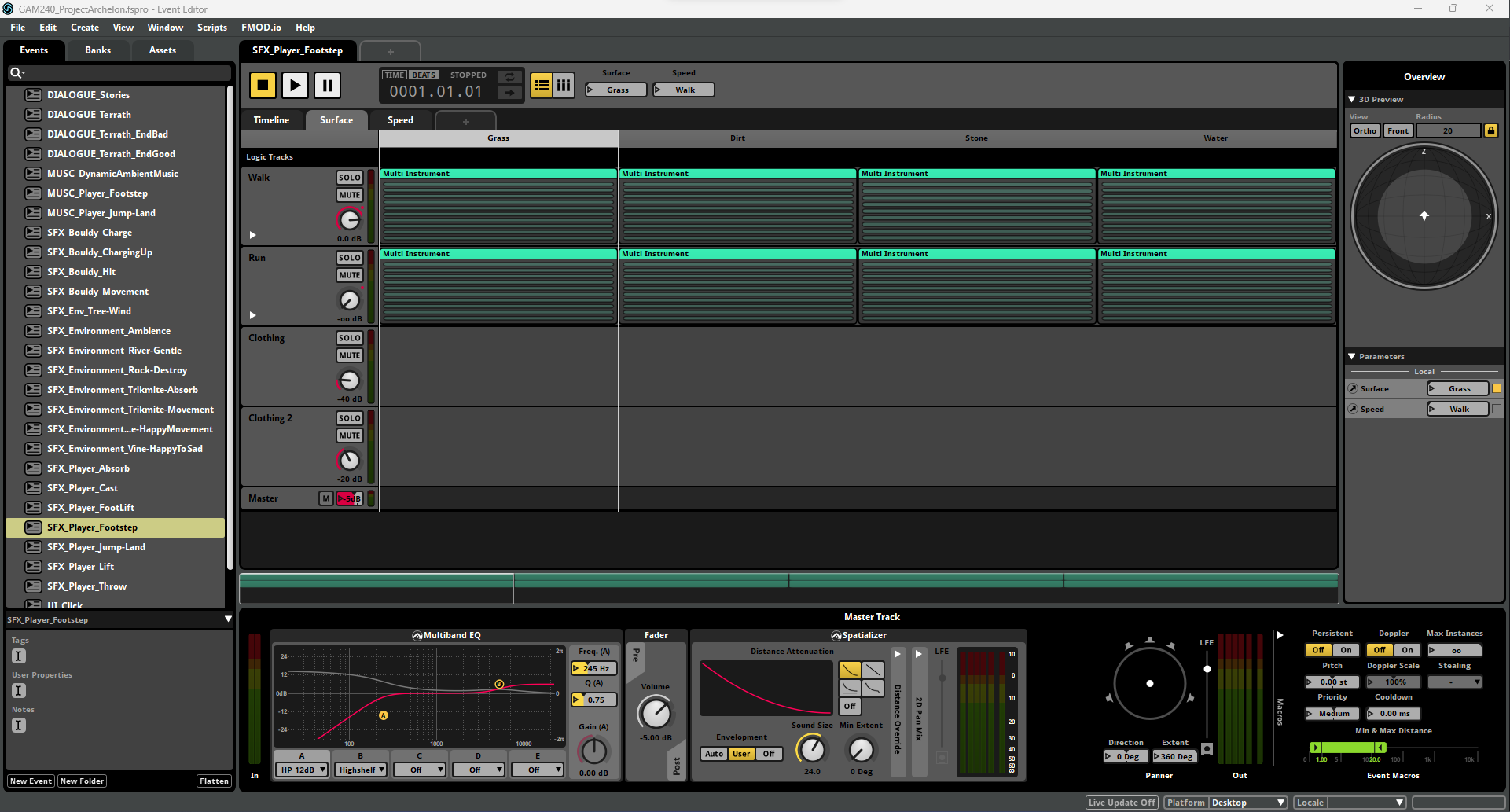Eden Jeffrey
Terrath (2023)
2023 / Country Turtle
Primary Roles:
– Technical Audio Designer (Reaper, Ableton, FMOD)
– Programming (Blueprint / C++)
Secondary Roles:
– Technical Art (Material Graph, Engine)
Details:
– Unreal Engine 5.1
– FMOD 2.02
Description
“Terrath is an environmental puzzle game about using your emotions to influence the world around you. Interact with the world and its inhabitants to become Happy, Sad or Angry. Apply these emotions to manipulate Flora and Fauna, allowing for safe passage through a living country.” – Terrath
Terrath was awarded a “Draft Pick” in the Rookies Awards 2022.
Terrath was featured in the Games Academy EXPO 2023, winning both the award for “Best of Second Year“, and the staff award “Holistic Harmony”, for the completeness of the Audio, Art and more.


Project Breakdown
Roles
Working on Terrath my primary role was “Technical Audio Designer”. This entailed everything from Foley and VA recording, to audio scripting and programming. I’ll be diving a bit deeper into some of the features I worked on later in the breakdown.
Alongside audio, I acted as a secondary gameplay programmer, assisting our programming lead with features such as the randomized Bézier curve movement of the flying enemies, and any programming pertaining to visual changes the game world undergoes.
This leads into the technical art work I completed. I contributed a significant amount to the technical and engine art work done for Terrath, working on setting up the weather, colour grading / visual systems and the “world emotion” system that controls them. This included setting up RVT’s for inter-mesh texture blending and globally parameterised materials that were influenced by the world emotions.
There were many more features I contributed over the course of production, but with the support and aid of my incredible teammates, the end product would be nowhere near as polished.
Developing and designing audio for various audio systems
Over the course of development, I had to design audio for many audio systems, handling everything from footsteps to dynamic music. Three of these systems were dynamic music/ambience, physically based audio and dialogue; below is a condensed video showcasing them.
Footstep system: physical surfaces & musical tones
The core of the footstep system in Terrath is fairly standard. With ten variations per surface material, differing paces for run and walk, and two layers of clothing sweeteners there are thousands of possible combinations, no even accounting for pitch modulation.

However, where this system differs if with the inclusion of a tonal layer to the footsteps. Tonal elements are split into three rows, Happy, Sad and Angry, each with their own subset of tones for the five surface material present in the game. These tonal layers have differing trigger possibilities, with Angry most frequent and Sad least frequent. These tonal elements to the footsteps subtly add to the soundscape of the game as the player makes their way through the game, adapting with the surface they walk on and the current world emotion. Although not something the average player will pick out, it contributes significantly to the overall feeling of immersion of the game.

Post-mortem
Overall, I am pleased with how this game turned out. I feel that the sound design and music systems significantly contributed to the character of the game and its success. Designing the dynamic ambience and music systems allowed me a great degree of freedom when directing the emotional weight of gameplay phases; evolving seamlessly with the visuals as the player influences the environment. Additionally, working with physically based audio systems provided many fulfilling challenges to overcome.
Despite its successes, I feel that the game significantly lacked audio for all aspects of UI. Diegetic UI, such as the emotion orbs, could have been aurally represented better, which may have solved some of the player on-boarding issues we experienced during playtesting. Furthermore, there was a huge lack of detail in non-diegetic UI, being quite literally an afterthought. Moving into the future this is a problem I plan on addressing early in the pre-production cycle, with UI audio being one of the first thing I will research and prototype.
